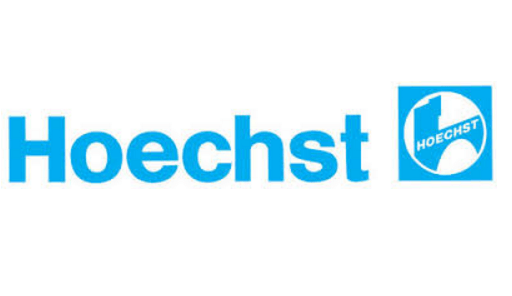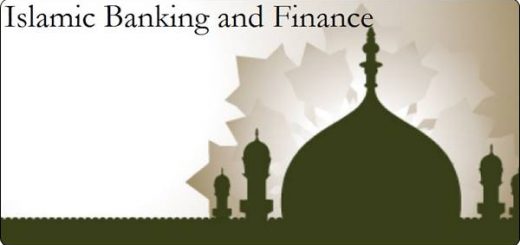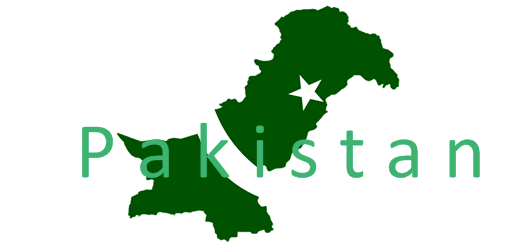Value Chain Analysis of HOECHST MARION ROUSSEL
Value Chain Analysis of HOECHST MARION ROUSSEL
HOECHST MARION ROUSSEL is the subsidiary of Hoechst AG of Germany, and was incorporated in 1967 as Hoechst Pakistan Ltd. Manufacturing of pharmaceuticals and chemicals in 1973. In 1977 the company went public and was listed on the Karachi Stock Exchange. Agrochemical formulation was started in 1985.
In line with the global reorganization of Hoechst AG, Hoechst (Pak) was also restructured. Agriculture business was spun of into a separate legal entity called AgroEvo Pakistan (pvt) Ltd., and specialty chemicals was sold to Clariant Pakistan Limited from Luly1, 1997 Hoechst Pakistan Limited changed its name to Hoechst Marion Roussel Pakistan Limited, and the core business will now be pharmaceuticals activities.
HMR is among the top six pharmaceuticals companies in Pakistan, manufacturing and marketing products that range from anti-allergic Avil, Telfast and analgesic-antipyretic novalgim, to sophisticated life saving drugs like Cofrom, Claforan and tarivid.
In addition to formulation of pharmaceuticals, the company entered the domain of semi-basic manufacturing in 1989, followed by an investment in basic manufacturing with the Haemaccel Project in 1994. The state-of-the-art German technology is used for providing a safe and infection free blood plasma substitute used in severe blood lost cases.
HMR caters to the needs of the doctors, chemists and hospitals through out Pakistan with its extensive distribution network. Depots and sales offices located in thirteen major cities of the country namely
- Bannu
- Bahawalpur
- Faisalabad
- Gujranwala
- Hyderabd
- Multan
- Sukkur
- Sargodha
- Rawalpindi
- Quetta
- Peshawar
- Karachi
- Lahore
The manufacturing plant and Head office are located in Karachi (Korangi Industrial Area). While Hoechst Marion Roussel AG holds 51% company shares, the balance 49% is held by local partners. Recently HMR has merged with Rhone-Poulenc Rorer to form new life sciences and crop sciences companies called Aventis. In Pakistan this will take effect from 2000/2001. HMR’s sales for 1999 were Rs. I, 677,798,000. It has 521 employees in his Pakistan office with sales of Rs.1.668 billion (US$32.33 m), this equates to sales of US$ 62056 per employee. Ts market capitalization as of 14th March 2000 was Rs. 229,177,080 ordinary shares, of which 6,944,760 are shares outstanding, and 4,641,363 are closely held shares.
In recent years this stock has performed terribly. In 1996, the stock traded as high as Rs. 119 vs. Rs. 33 as of 14th March 2000. For this 52 weeks ending 14th March 2000, the stock of this company was up 25% to Rs. 33. During the past 13 weeks, the stock has increased 20.8%. During the 12 months ending 31st December 1999, earnings per share totaled Rs.3.18 per share. Thus, the price/earning ratio is 10.38. Earnings per share fell 64.5% in 1999 from 1998.
HMR comprises of two areas, i.e. Operational and Support. Operational consists of departments that are related to the marketing and sales of our products, and support comprises departments assisting the operational functions. The main features of these departments in their respective categories are as follows:
Operational:
Sales: all medical representatives’ as well as senior managers implementing marketing strategies for sale of products.
Marketing: preparation of marketing strategies tools and programs for products.
Business Development: responsible for bringing new products of HMR to Pakistan.
Medical: conducting clinical trials of existing as well as new products.
Distribution HMR has its own distribution networks to make its products available throughout Pakistan.
Support
Finance and Administration: maintaining accounts, managing and arranging finances and reporting to local as well as regional head office.
Factory: manufacturing, production and repackaging of HMR products.
Materials Management: procurement, production planning, and logistics off all HMR raw as well as finished goods.
Human Resources: recruitment, general company policies and maintaining personnel records.
GOAL OF THE COMPANY
The primary goal of the company is to provide itself as the preferred Pharmaceutical Company in Pakistan, leading the field in its commitment to safety, customer service, quality and environmental protection. To achieve these goals, initiatives in infrastructure development, human health safety improvements, development of competencies in personnel and instilling a service oriented, professional attitude to work in our employees have been launched. These initiatives are aimed at making us the most responsible supplier and marketer of Pharmaceutical products in Pakistan.
COMPETITIVE STRUCTURE OF INDUSTRY:
Entry Barriers
Hoechst Marion Roussel, Pakistan is Pharmaceutical giant having a huge investment all over Pakistan. Pharma sector is one of the costly sectors, which requires a major initial outlay. Hoechst Pakistan also has retail outlets even in the remote areas of Pakistan and it has the huge market share. It’s position as far as new entrants are concerned is very strong because of high initial outlay required to enter the market. The investment of the company, if considered in the backdrop of present market situation, can be considered to be safe but the company has to be aggressive and achieve operational excellence to be profitable. The products offered by Hoechst Pakistan are not highly differentiated but in case of agricultural chemicals, differentiation is achievable only operationally that means through quality control and service. Hoechst Pakistan can also bank on its brand loyal customers, as this is one of the crucial factors for the success of the business.
Supplier Power
Hoechst Pakistan has a strong position as compared to its suppliers because there are no threats from backward integration and the cost of switching suppliers is also not very high. As the suppliers are concentrated in the geographical area it is easy to access them and even the inputs does not have any effect on the output.
Substitutes
There are various substitutes available. Every pharmaceutical company is producing the chemicals with slight variation in quality and prices so there is a strong competition in case of substitutes. Otherwise, homeopathic medicines are one of the major substitutes in case of medicines and other low quality chemicals in case of agricultural products of Hoechst.
Rivalry Determinants
The pharmaceutical industry in Pakistan is growing steadily but there was a decline in 1996. The basic difference in the products offered by the different firms in the industry is quality and quantity. There is a large number of buyers therefore buyer cost of switching brands is high for the firm. There are numerous competitors and they are big firms therefore information about them is easily available. Any one in this industry has a huge investment and a large capital at stake. This feature makes it difficult for any one to leave the industry.
Buyers Power
Hoechst Pakistan earns a major part of its revenue from its effective distribution network. Regular customers and dealers who usually buy from the company are visited by company salespersons on weekly basis. The information about the buyers is not readily available. The price change effects volume and demand due to many competitors in the market. In the case of pharmaceutical industry even the strong brand identity does not allow a firm to command higher prices because of government regulations. Incentives are a major part of marketing techniques of Hoechst Pakistan because it is the major factor that drives the customers and dealers.
Marketing Questions
There are a large number of product choices available. The number of routine transactions required between the company and its vendors, for ordering and requesting information is very small. This industry requires highly aggressive strategies and it is essential to get quick, accurate, customer decisions. Four levels separate customers from the manufactures.
Operations Questions
Time and cost are important factors in the business. In case of Hoechst Pakistan there is a possibility of reduction or efficiency in these two sectors. Direct an indirect labor is also high. Firm usually has to carry large inventories due to the nature of the business but again there is a potential for major inventory reductions by using efficient techniques. Quality control is one of the important areas, which is given specific attention. The procedures for quality control are simple and are followed as a guideline. The products offered by Hoechst Pakistan are simple in nature and do not require any kind of complex design or high technology. There is also no geographical dispersion in sourcing which makes it easier for the company.
Positioning Analysis
INTERRELATEDNESS
NETWORKS
What Hoechst does is marketing of products manufactured by the firm in Pakistan. It needs to have its own distribution channels. Hoechst distributes its products itself through salespersons, which enables the company to monitor and manage the overall performance of the company. Also it has its own well-defined distribution channels and systems to monitor them.
INTERCONNECTIVITY
COMPATIBILITY
Since most of the products sold by Shell Pakistan are same as what its competitors sell they use somewhat the same kind of equipment. But since it is a highly competitive industry they do not want the competitors to know its sale data they are not connected.
HUMAN SKILLS
Most of the human skills required in the operation and production are widely available. There are a lot of chemical, electrical and mechanical engineers along with cheep labor. Thus they do not have much trouble in this regard.
As for as the marketing side is concerned, they do have a lot of people, who have enough knowledge about the industry and can also follow the business, as there are many competitors in the market.
Thus they normally higher the marketing employees from the beginning and keep them. It also provides a sense of security among the employees.
COMPLIMENTARY PRODUCTS
There are no such complimentary products that can be shared or used by its competitors either. All of its business is standardized and most of their products are made globally for the company.
DETERMINANTS OF PROFITABILITY
MARKET PROFITABILITY
The government regulates the industry profits and thus there is very small percentage of margin that can be earned. The only way to increase profitability is to increase its turnover.
ABILITY TO EXPLOIT THE MARKET
The only way to earn profits to increase the turnover which can be done by offering the customers with better quality and providing operational efficiency.
Hoechst Pakistan has a very high quality standard and that is its unique selling proposition (USP) apart from the image differentiation it offers.
THREATS ANALYSIS
EXTERNAL THREATS
First threat could be the uncertainty and the ever-changing government policies. The current regional arms race and socio-economic conditions, coupled with the law and order conditions can force anybody to have doubts about investing in the country and that is the only reason why Hoechst Pakistan went from its rupees 1.6 billion proposed investment to rupees one billion investment in the year 1998 and further down in 1999.
There is also high speculation about the import of raw materials as government is imposing ban on raw materials export that will seriously lower the total production of the firm and in turn lowering the market share. Thus Hoechst Pakistan doesn’t want to invest in a situation like this.
VALUE CHAIN ACTIVITIES
PRIMARY ACTIVITIES
INBOUND LOGISTICS
Hoechst Pakistan imports a significant percentage of raw materials from different parts of the world, besides this they are involved in purchasing according to contracts and from the open market according to the requirements. They have a storage facility at each of their major regional center.
- Firstly all of the raw materials are brought to the Karachi Keamari storage depot.
- From there it is transported to the manufacturing plant located in Korangi.
- Trucks and loaders basically do the inbound transportation which down load directly into the manufacturing depots.
OPERATIONS
- Requisitions are made from different sections in the manufacturing plant for the requirement of the material.
- Materials are issued on the bases of requirement according to different sections in the manufacturing plant. And also it depends highly on the demand of the product in the market.
- The production process is measured on the basis of “production protocol” includes machine hours, labor hours and the amount of raw material used to produce the product.
- Overall the experts of the quality control department do supervision during the daily processes.
- Besides this monitoring is done at the end of the month in which the processes performed are checked in relation with output.
- Before sending the goods to the Finished Goods Warehouse (FGW), the quality control departments check the product samples according to their requirements.
- Then report is prepared which is based on the proportions of chemicals and other raw material used in any product according to normal usage of the products.
- Finally the goods are transferred to the Finished Goods Warehouse (FGW) where they are stored until distributed.
OUTBOUND LOGISTICS
Hoechst Pakistan has a number of sites and distribution stores all over Pakistan including the remote areas in the northern part of the country. Its distribution network is one of the major strengths on this company as it covers the areas, where its competitors are unable to supply due to lack of infrastructure and other facilities but the products are highly in demand.
The delivery to these sites is based on the area where they are located. The country has been divided into two zones; North & South, which are further divided into areas, where there is a Hoechst depot or distribution store.
- First of all, the distribution stores and the salespersons record their orders and the sites to which the products have to be delivered, in their respective zonal offices.
- National distribution manager plans the distribution process.
- Then quality and quantity of the shipment are checked before loading into the trucks for distribution.
- The goods are loaded on the trucks and other transportation vehicles.
- After the loading of the goods on the trucks they are transferred to distribution stores in the different parts of the country.
- Transportation is done twice a week to the respective sites.
- Weekly schedule and the weekly booking is done by the chemists and reported to the zonal offices.
- Vans are also used to directly market and sell the product in the remote areas where salespersons are unable to reach.
- Besides this minimum quantity level is set and the goods are ordered as soon as the inventory in the distribution stores reach this level.
- When the inventory reaches the depots, the orders are then filled, according to orders made by the customers and the chemists.
MARKETING & SALES
Hoechst Pakistan has a very big marketing and sales department. Sales department is basically divided into furthar sub divisions. There basic function is to monitor and make the sales at each site to send its sales data to the Zonal Sales Manager of that area who is supposed to meet the target and make sales as projected. Use of IT is also made in the department and all the sales data from each region onwards is collected on time. And even some sites give in data to their regional officers on time also.
Planning of developing a new product.
- Marketing research is done in order to know the demand of the product and if the material is available or not.
- Advertising is done for the promotion of product through the media.
- Direct mailing is done to the doctors and the chemists, which is another way of promoting any new innovation products.
- Focus groups are arranged in which highly qualified doctors and experts are invited
- Whenever a new product is launched, product presentations are done to create awareness.
- Scientific publications are enhanced and distributed along with the products when they are being supplied to the distributors for the use of customers.
- Clinical trials are arranged for the information of doctors in which physician samples are given to them.
- Foreign and local speakers are invited in different sessions arranged for the awareness of the people and especially doctors and physicians.
- Chemists are given the ‘give-aways’ for the promotion of the products.
- Training field force is arranged in which the salespersons are informed of various methods of dealing with the customers.
The sales department, which is considered to be the backbone of the company, plays a vital role in promoting the product.
- First of all targets are set according to the historical model growth
- The target is broken down according to different criteria.
- Sales department has to monitor the target, as if it is being achieved or not.
- They have to handle different queries from the customers and the doctors regarding the product.
- They also have developed different educational material according to the medical view, which would help them.
SECONDARY ACTIVITIES
CORPORATE STRUCTURE
Shell Pakistan is divided into six basic departments.
Marketing & Sales department
Business Development department
Medical department
Distribution department
Finance & Administration department.
Factory
Materials Management
Human Resources
Information Technology
HUMAN RESOURCES MANAGEMENT
Human Resources Department is located centrally in the Head Office. Hiring at the management level is done through the Head Office. While hiring of low level managers can be done at the regional office. Recruitment is done whenever there is a need of employees in the company and interview is arranged for this purpose. The HR department makes General Company policies.
FINANCE AND ADMINISTRATION
Maintaining Accounts on General Ledger
Managing and arranging finances
Reporting to local as well as regional head offices.














![Lahore de Darwaajay [Gates of Inner Lahore City]](https://www.ravimagazine.com/wp-content/uploads/2015/04/lahore-fort-badshahi-mosque-beenish-scans-164-520x245.jpg)